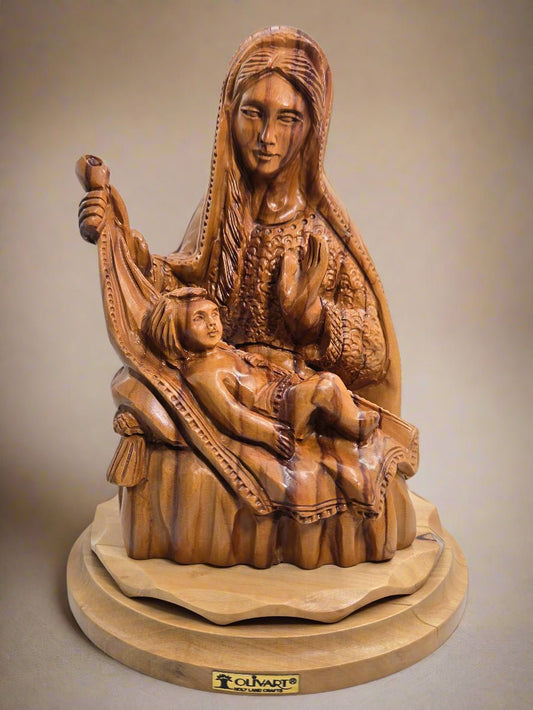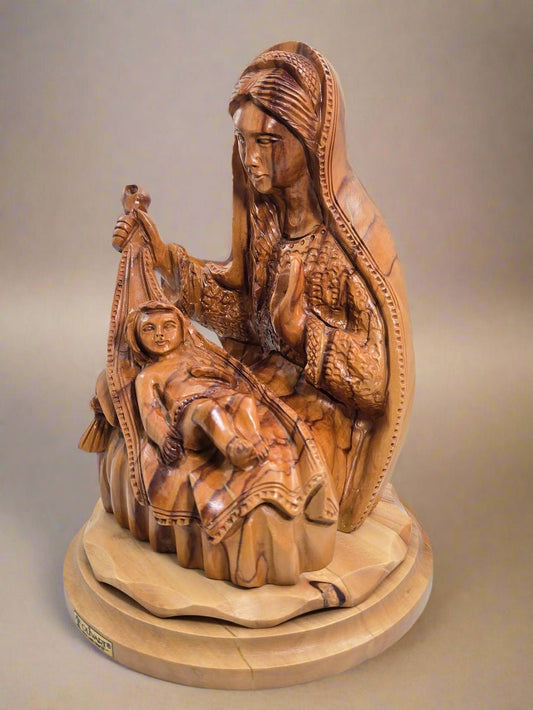In the heart of Jerusalem's Old City, amidst a labyrinth of ancient alleyways and bustling marketplaces, stands a church unlike any other. The Church of the Holy Sepulchre is not merely a place of worship; it is a testament to two millennia of faith, a sacred space that encompasses the very sites where Christians believe Jesus of Nazareth was crucified, buried, and resurrected.
To enter its hallowed halls is to step into a world where history and spirituality intertwine, where the echoes of ancient prayers still resonate in the air.
The story of the Church of the Holy Sepulchre begins in the 4th century, when the Roman Emperor Constantine the Great, a convert to Christianity, ordered the construction of a grand basilica on the site. His mother, St. Helena, is said to have identified the location of the crucifixion and tomb, and even to have discovered the True Cross upon which Jesus was crucified. The original church, dedicated in 336 CE, was a magnificent structure, designed to enclose both the Rock of Calvary and the tomb of Jesus.
Over the centuries, the church has endured a tumultuous history, having been destroyed and rebuilt on multiple occasions. It was burned by the Persians in 614, destroyed by the Caliph al-Hakim in 1009, and rebuilt by the Crusaders in the 12th century. The present-day structure, with its mix of architectural styles, is a testament to this long and complex history. Each stone seems to tell a story, each chapel a chapter in the ongoing saga of this
sacred place.
For countless pilgrims, the journey to the Church of the Holy Sepulchre begins on a narrow, winding street known as the Via Dolorosa, or the "Way of Sorrows." This is the traditional route that Jesus is believed to have walked on his way to the crucifixion, carrying the heavy wooden cross upon his shoulders. The Via Dolorosa is not just a physical path; it is a spiritual journey, a pilgrimage that allows believers to retrace the final steps of Jesus and to meditate on his suffering and sacrifice.
Along the Via Dolorosa are fourteen Stations of the Cross, each marking a significant event in Jesus' final journey. The stations begin where Jesus was condemned to death and end at his tomb within the Church of the Holy Sepulchre. Some of the stations are marked by small chapels, others by simple plaques on the walls of buildings. Each one offers a moment for reflection and prayer, a chance to connect with the profound drama of the Passion story.
The first station, where Jesus is condemned to death, is located in the courtyard of a former Roman fortress. The second station, where Jesus receives the cross, is marked by the Ecce Homo Arch, where Pontius Pilate is said to have presented Jesus to the crowd with the words, "Behold the man." As pilgrims make their way along the Via Dolorosa, they pass the places where Jesus is said to have fallen, where he met his mother, and where Simon of Cyrene was compelled to help him carry the cross.
The final five stations are located within the Church of the Holy Sepulchre itself, creating a seamless transition from the path of suffering to the place of resurrection. This powerful juxtaposition of death and new life is at the very heart of the Christian faith, and it is nowhere more palpable than within the walls of this ancient church.
Upon entering the Church of the Holy Sepulchre, one of the first things that pilgrims encounter is the Stone of Anointing. This large, reddish slab of stone is believed to be the very spot where Jesus' body was laid after being taken down from the cross. It was here that his body was anointed with spices and prepared for burial, in accordance with ancient Jewish tradition. The Stone of Anointing is a place of profound reverence, and it is not uncommon to see pilgrims kneeling to kiss the stone, their faces wet with tears. Many will also bring cloths to press against the stone, believing that they will be imbued with its sanctity.
The Stone of Anointing serves as a powerful reminder of the physical reality of Jesus' death. It is a tangible link to the moment of his greatest vulnerability, a moment of profound grief and loss. Yet, it is also a place of hope, for it marks the transition from death to burial, and ultimately, to resurrection.
From the Stone of Anointing, pilgrims can ascend to the Rock of Calvary, the traditional site of the crucifixion. Encased in glass, the rock is a stark and powerful reminder of the brutal reality of Roman crucifixion. To stand in this spot is to be transported back in time, to imagine the scene of Jesus' final moments, a scene of unimaginable suffering and love.
Finally, the journey culminates at the Edicule, the small shrine that encloses the tomb of Jesus. This is the holiest site in all of Christendom, the place where Christians believe that Jesus was laid to rest and where, on the third day, he rose from the dead. The Edicule has been recently restored, and its gleaming marble and intricate carvings are a testament to the enduring faith of generations of Christians.
To enter the tomb itself is an experience that is difficult to put into words. It is a small, cramped space, yet it feels as though it contains the very mystery of the universe. To stand in the place where the resurrection is believed to have occurred is to be confronted with the central tenet of the Christian faith: that death is not the end, but the beginning of a new and eternal life.
The Church of the Holy Sepulchre is more than just a collection of historical artifacts and sacred sites. It is a living, breathing testament to the power of faith to transcend time and to unite people from all corners of the globe. It is a place of pilgrimage, a place of prayer, and a place of profound spiritual transformation. To walk its ancient stones is to walk in the footsteps of history, to connect with a story that has shaped the course of human civilization, and to be reminded of the enduring power of hope, love, and resurrection.
Discover our unique master crafts made in Jerusalem & Bethlehem (Explore the crafts)




